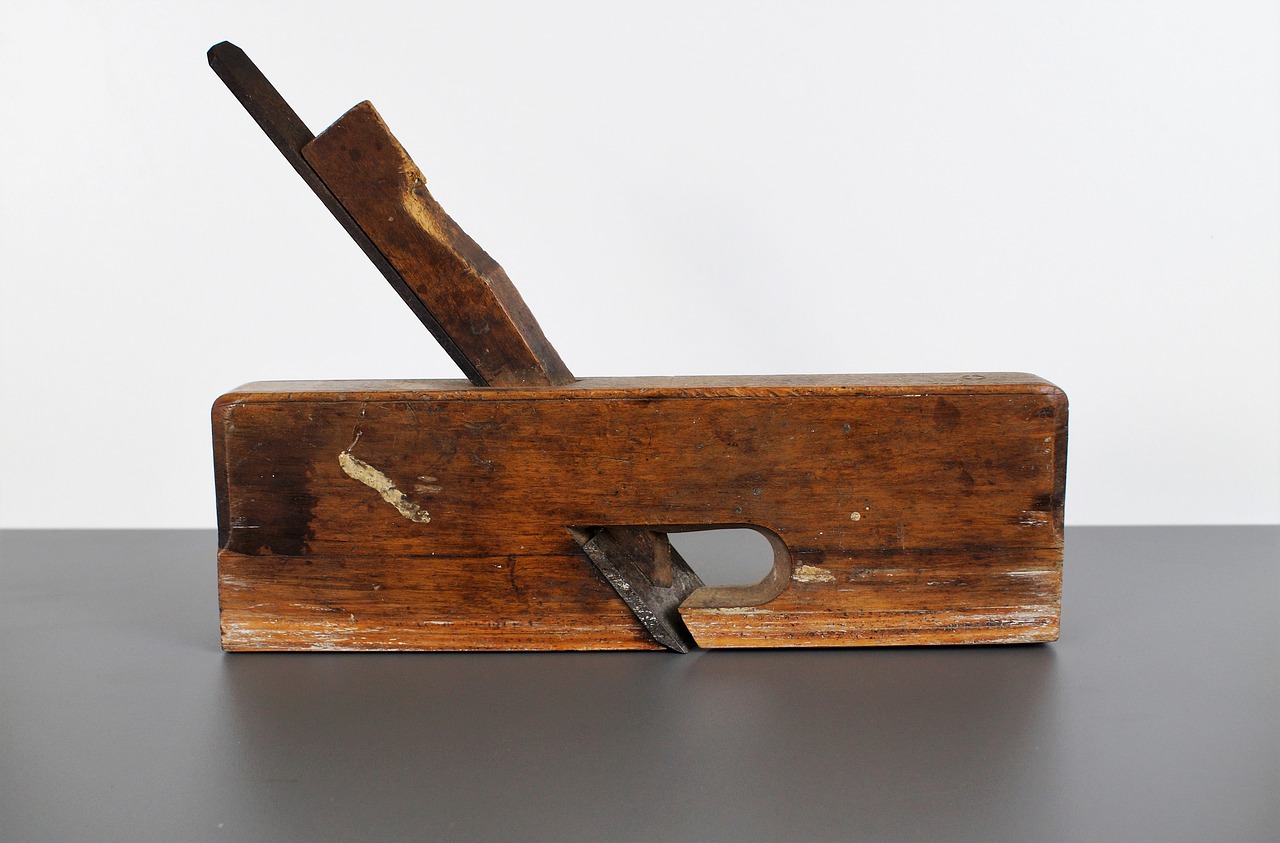Whip Up a Wooden Wind Chime with These Steps
Have you ever listened to the gentle tinkling of a wind chime on a breezy day? It's like nature's very own music, soothing and calming. Creating your own wooden wind chime can be an incredibly rewarding project, allowing you to bring a piece of art into your home while enjoying the therapeutic sounds it produces. In this article, we’ll guide you through the entire process of crafting a wooden wind chime from scratch. Whether you're a seasoned DIY enthusiast or a curious beginner, you'll find everything you need to know right here. So, grab your tools and let’s get started on this charming journey!
Selecting suitable materials is crucial for your wind chime's durability and sound. The type of wood you choose will significantly impact the chime's tonal quality and longevity. Hardwoods like oak or maple are excellent choices due to their density, which produces a richer sound. Conversely, softer woods like pine may not resonate as beautifully but can be easier to work with. When it comes to strings, opt for strong, weather-resistant materials like nylon or braided fishing line to ensure your chime withstands the elements. Don't forget to consider decorative elements as well! Think about adding beads, shells, or even small bells to enhance the aesthetic appeal and sound of your chime.
Before diving into your wind chime project, it’s essential to gather all the necessary tools. A well-prepared workspace can make all the difference! Here’s a quick rundown of the tools you’ll need:
- Saw: A hand saw or a jigsaw will help you cut the wood into the desired lengths.
- Drill: A power drill is crucial for making holes in your wood pieces for the strings.
- Sander: To smooth the edges of the wood, a sander will give your chime a polished look.
- Measuring Tape: Accurate measurements are key to ensuring all parts fit together seamlessly.
Safety should always come first when using tools. Before you start, take a moment to consider the safety measures you’ll need to implement. Always work in a well-lit area and ensure your workspace is free from clutter to avoid accidents. Proper safety gear is essential; wearing goggles and gloves can protect you from dust and sharp edges. Remember, a little precaution can go a long way in preventing injuries!
Using appropriate protective gear, such as goggles and gloves, is vital. Goggles shield your eyes from sawdust and debris, while gloves protect your hands from cuts and splinters. It's easy to overlook these items in the excitement of crafting, but they are your first line of defense. So, make it a habit to wear them every time you work with tools.
A well-organized workspace enhances efficiency and safety. Before you start your project, take a few minutes to arrange your tools and materials. Keep your saws, drills, and other tools within arm's reach, and lay out your wood pieces in an orderly fashion. This not only saves time but also minimizes the risk of accidents, allowing you to focus on creating a beautiful wind chime without distractions.
Now that you have your materials and tools ready, let’s dive into the assembly process! Follow these detailed, easy-to-follow instructions to create your wooden wind chime:
- Cut the Wood: Start by cutting your wood into various lengths. The lengths will determine the pitch of the notes your chime will produce.
- Smooth the Edges: Use the sander to smooth out any rough edges on your wood pieces. This step is crucial for both aesthetics and safety.
- Drill Holes: Drill holes at the top of each wood piece for the strings to pass through. Make sure the holes are large enough for the string to slide easily.
- Assemble the Chime: Cut lengths of string and thread them through the holes in your wood pieces. Tie knots to secure them in place.
- Attach to a Base: Use a sturdy base, like a circular piece of wood or a metal ring, to hang your chime. Attach the strings evenly for balance.
- Finish with Decoration: Add any decorative elements, such as beads or shells, to personalize your wind chime.
Adding personal touches can make your wind chime unique. This is where your creativity can truly shine! Think about how you want to express yourself through your design. You might want to paint it in vibrant colors, engrave a special message, or incorporate natural elements like shells or stones. Each choice you make will contribute to the overall charm of your wind chime, making it a true reflection of your personality.
Explore different painting techniques to enhance the aesthetic appeal of your wind chime. Techniques like stenciling can create intricate designs, while sponge painting offers a more textured look. Don’t be afraid to experiment with colors and patterns until you find a style that resonates with you. Remember, this is your creation, so let your imagination run wild!
Using natural elements like shells or stones can add charm to your wind chime. Consider collecting items from your favorite beach or park to incorporate into your design. These elements not only provide a unique touch but also connect your wind chime to nature, making it even more special. You can thread shells onto the strings or attach small stones to the base for an organic look.
Q: How long will my wooden wind chime last?
A: With proper care and the right materials, a wooden wind chime can last for several years. Make sure to choose durable wood and weather-resistant strings.
Q: Can I use other materials besides wood?
A: Absolutely! While wood is traditional, you can also experiment with metal, bamboo, or even recycled materials for a unique sound and look.
Q: How do I hang my wind chime?
A: You can hang your wind chime from a tree branch, a porch ceiling, or even a hook on your wall. Just ensure it’s in a spot where it can catch the wind!

Choosing the Right Materials
When it comes to crafting a stunning wooden wind chime, the first step is to choose the right materials. The quality of your materials not only affects the durability of your wind chime but also plays a significant role in the sound it produces. Imagine standing in your garden, the gentle breeze rustling the leaves, and suddenly, the soft melodies of your wind chime fill the air. That enchanting sound is largely dependent on what you select. So, let's dive into the essentials!
First and foremost, the type of wood you choose is crucial. Hardwoods like oak, maple, or cherry are excellent options due to their density and durability. They produce a richer and deeper sound compared to softer woods like pine or cedar. If you're looking for a more melodic tone, consider using bamboo as it resonates beautifully. Here's a quick comparison:
| Type of Wood | Sound Quality | Durability |
|---|---|---|
| Oak | Rich and deep | High |
| Maple | Bright and clear | High |
| Bamboo | Melodic and resonant | Moderate |
| Pine | Soft and subtle | Low |
Next, let’s talk about the strings. The strings are what hold everything together, both literally and figuratively. You want to use a material that is weather-resistant and durable, especially if your wind chime will be hanging outdoors. Nylon or polyester cords are fantastic choices because they can withstand the elements without fraying or breaking. Just think about it: you wouldn’t want your beautiful creation to fall apart after a rainstorm, right?
Now, let’s not forget about the decorative elements! Personalizing your wind chime can truly make it a one-of-a-kind piece. You might want to incorporate beads, shells, or even small stones. These elements not only enhance the visual appeal but can also add to the sound. For instance, adding beads can create a delightful tinkling sound when they clink together. The beauty of crafting is that you can let your imagination run wild!
In summary, selecting the right materials for your wind chime is a foundational step that can significantly impact its overall aesthetic and auditory experience. By choosing quality wood, durable strings, and unique embellishments, you’ll be well on your way to creating a wind chime that not only looks stunning but also sounds amazing. So gather your materials and get ready to create something beautiful!

Tools Required for Construction
Before diving into the exciting world of crafting your own wooden wind chime, it’s essential to gather all the necessary tools. Having the right tools not only makes the process smoother but also ensures that you can create a stunning piece that will dance beautifully in the breeze. So, let’s explore the tools you’ll need to bring your vision to life.
First and foremost, you’ll need a saw. A hand saw or a jigsaw works great for cutting the wood into the desired shapes and lengths. If you’re looking for precision, a miter saw can be your best friend, especially for making those perfect angled cuts. Next up is a drill. This tool is vital for making holes in the wood, allowing you to attach strings or cords later on. A cordless drill can give you the freedom to move around your workspace without being tethered to an outlet.
Another essential tool is a sander. Sanding the edges of your wooden pieces will not only make them smooth but also prevent any splinters from ruining your crafting experience. You can opt for a power sander for quicker results, or go old-school with sandpaper if you enjoy a hands-on approach. Additionally, a measuring tape and a square are crucial for ensuring that your pieces are cut to the right dimensions and that everything is aligned correctly. A little bit of precision goes a long way in crafting!
Now, let’s not forget about the string or cord you’ll use to hang your wind chime. Look for something durable that can withstand outdoor conditions, like nylon or cotton cord. You’ll also need some hooks or rings to attach your chime to a support structure. Finally, having a glue gun and glue sticks handy can help when you want to secure decorative elements or make quick fixes without the need for drilling.
To summarize, here’s a quick overview of the tools you’ll need:
| Tool | Purpose |
|---|---|
| Saw | Cutting wood into desired shapes |
| Drill | Creating holes for hanging |
| Sander | Smoothing edges and surfaces |
| Measuring Tape | Ensuring accurate dimensions |
| String/Cord | Hanging the wind chime |
| Hooks/Rings | Attaching the wind chime to a support |
| Glue Gun | Securing decorative elements |
With these tools at your disposal, you’ll be well-equipped to embark on your wind chime crafting adventure. Remember, the journey of creating something beautiful starts with being prepared, so gather your tools and let your creativity flow!

Safety Precautions
When diving into the world of DIY projects like crafting a wooden wind chime, safety should be your top priority. You might think that it's just a simple project, but the tools you'll be using can pose potential risks if not handled properly. To ensure a safe and enjoyable crafting experience, it's essential to follow some key safety precautions. First and foremost, always wear appropriate protective gear to shield yourself from any mishaps. This includes safety goggles to protect your eyes from flying debris, gloves to prevent cuts, and a dust mask if you're working with sawdust or paint fumes. Remember, it’s better to be safe than sorry!
In addition to wearing protective gear, it's crucial to maintain an organized workspace. A cluttered area can lead to accidents, as tools may be misplaced or difficult to access. Here are some tips to help you keep your workspace tidy:
- Designate a specific area for your project where you can spread out your materials and tools.
- Store tools in a toolbox or on a pegboard to keep them easily accessible.
- Regularly clean up as you work to prevent tripping hazards.
Another important aspect of safety is being mindful of your surroundings. Make sure that your workspace is well-lit and free from distractions. If you're working outdoors, be aware of the weather conditions; for instance, strong winds can make it difficult to handle materials safely. Always double-check that your tools are in good working condition before use. Dull blades or faulty equipment can lead to accidents, so take a moment to inspect everything before you start cutting or drilling.
Lastly, if you’re new to using certain tools, don’t hesitate to seek guidance or watch tutorial videos online. Understanding how to use each tool properly will not only enhance your safety but also improve the quality of your work. Remember, a well-prepared crafter is a safe crafter!
Q: What should I do if I get injured while working on my wind chime?
A: If you sustain a minor injury, clean the wound and apply a bandage. For serious injuries, seek medical attention immediately. Always keep a first aid kit handy in your workspace.
Q: Are there any specific tools that are safer for beginners?
A: Yes, tools like handheld saws and manual drills are generally safer for beginners compared to power tools. Always prioritize safety features when selecting tools.
Q: How can I prevent wood splinters while working?
A: Sanding the edges of your wood pieces thoroughly can help prevent splinters. Always wear gloves to protect your hands during the crafting process.

Wearing Protective Gear
When it comes to crafting your own wooden wind chime, safety should be your top priority. Imagine diving into a fun project only to get sidelined by a preventable injury—yikes! That's why wearing the right protective gear is essential. Not only does it keep you safe, but it also allows you to focus on creating a beautiful piece without worrying about potential hazards.
First off, let's talk about goggles. These little wonders are your best friends when working with wood. Whether you're cutting, sanding, or drilling, sawdust and wood chips can easily fly into your eyes. A good pair of goggles will shield your eyes from debris, ensuring you can see your masterpiece come to life without any interruptions. Think of them as your personal shield against the chaos of crafting!
Next, you have gloves. When you're handling rough pieces of wood or using tools, your hands are at risk of cuts and splinters. Wearing gloves not only protects your hands but also provides a better grip on tools, making your work smoother and safer. It's like having an extra layer of armor while you battle against the elements of your project!
Lastly, consider wearing a dust mask. When you're sanding wood, fine particles can get airborne and into your lungs. This is where a dust mask comes in handy, acting as a barrier between you and those pesky particles. It’s a small investment for your health, and it allows you to breathe easy while you create.
In summary, here’s a quick rundown of the essential protective gear you'll want to have on hand:
- Goggles: Protect your eyes from sawdust and debris.
- Gloves: Safeguard your hands from cuts and splinters.
- Dust Mask: Keep your lungs safe from fine particles.
By taking these simple precautions, you can ensure that your crafting experience remains enjoyable and injury-free. So, gear up and get ready to create your stunning wooden wind chime with confidence!

Organizing Your Workspace
When it comes to crafting your wooden wind chime, organization is key. Imagine trying to cook a gourmet meal in a cluttered kitchen; it just doesn’t work, right? The same principle applies here. A well-organized workspace not only enhances your efficiency but also ensures your safety as you work with tools and materials. Start by designating a specific area for your project, preferably a spot with good lighting and ample space to move around. This will help you stay focused and minimize distractions.
Next, gather all your materials and tools before diving into the assembly process. Lay them out in a way that makes sense to you. For instance, place your wooden pieces on one side, your tools on another, and any decorative elements nearby. This way, you won’t waste time searching for that elusive drill or a piece of wood. You might even consider using a toolbox or a small cart to keep your tools organized and easily accessible. Here’s a quick rundown of how you can arrange your workspace:
| Area | Items to Include |
|---|---|
| Work Surface | Wood pieces, assembly instructions, workspace mat |
| Tool Station | Saws, drills, sanders, measuring tape |
| Decorative Elements | Paints, brushes, shells, stones |
Additionally, consider implementing a system for keeping your workspace tidy. You can use containers or bins to separate different types of materials. For example, one bin could hold your paints while another could store your decorative elements. Not only does this help in finding what you need quickly, but it also prevents any accidental spills or mix-ups. Remember, a clean workspace is a happy workspace!
Lastly, make sure to keep safety gear within reach. Goggles, gloves, and masks should be easily accessible so that you can put them on without delay whenever you start working with tools. This simple act can significantly reduce the risk of injuries. By taking the time to organize your workspace, you’re not just preparing for a project; you’re setting yourself up for a successful and enjoyable crafting experience.
- What type of wood is best for a wind chime? Softwoods like pine or cedar are great choices as they are lightweight and produce lovely sounds.
- How can I ensure my wind chime lasts longer? Treating your wood with a weather-resistant sealant can help protect it from the elements.
- Can I use recycled materials? Absolutely! Recycled wood and other materials can add a unique touch to your wind chime.

Step-by-Step Assembly Instructions
Creating your own wooden wind chime might seem daunting at first, but with a little patience and the right guidance, you’ll find it to be a rewarding experience. Let’s break it down step by step so you can enjoy the soothing sounds of your very own creation in no time! First, gather your materials: wooden pieces, strings, and any decorative elements you wish to incorporate. Having everything ready will make the process smoother and more enjoyable.
Start by cutting your wooden pieces into varying lengths. The length of each piece will affect the pitch of the sound it produces, so feel free to experiment! A good rule of thumb is to cut at least five pieces, ranging from 6 to 12 inches. Once you’ve cut your wood, it’s time to sand the edges to avoid any splinters. A smooth edge not only feels better but also resonates sound more beautifully. After sanding, you can choose to paint or leave the wood in its natural state, but remember, a little creativity goes a long way!
Next up, let’s move on to the assembly. Take your longest wooden piece and tie a string around it, ensuring it’s securely fastened. This piece will be the central support for your wind chime. Now, attach the other wooden pieces by tying them to the string at varying intervals. This not only adds an aesthetic appeal but also creates a unique sound as they clink together in the breeze. Make sure to leave enough string between each piece to allow for movement. You want your wind chime to dance in the wind, right?
Once all the wooden pieces are attached, it’s time to create the top part of your wind chime. This is where you’ll be hanging it. You can use a circular piece of wood or a sturdy branch. Drill holes into your chosen top piece and thread the strings through, tying knots to secure them. Ensure that the weight is evenly distributed to prevent your wind chime from tilting. After that, all that’s left is to add any embellishments like beads, shells, or even small stones to personalize your chime further. These additions not only enhance the visual appeal but also create additional sounds when they collide with the wooden pieces.
Finally, once everything is assembled, hang your wind chime in a location where it can catch the wind. A porch, garden, or balcony are perfect spots. Step back and enjoy the fruits of your labor as the gentle breeze creates a symphony of sounds. Remember, the beauty of making your own wind chime is in the imperfections and the personal touches you add along the way. So don’t be afraid to experiment and let your creativity shine!
Q: What type of wood is best for making wind chimes?
A: Hardwoods like cedar, oak, or bamboo are excellent choices due to their durability and sound quality.
Q: How can I ensure my wind chime produces a pleasant sound?
A: Experiment with different lengths and thicknesses of wood. Longer pieces typically produce lower tones, while shorter pieces create higher pitches.
Q: Can I use recycled materials for my wind chime?
A: Absolutely! Recycled materials can add a unique touch and are often more environmentally friendly. Just ensure they are safe and durable.
Q: How do I maintain my wooden wind chime?
A: Regularly check for wear and tear, especially in the strings. If the wood begins to fade, you can reapply a protective finish or paint to keep it looking fresh.

Personalizing Your Wind Chime
When it comes to crafting your own wooden wind chime, the magic truly lies in the details of personalization. After all, you want your creation to reflect your unique style and personality, right? Personalizing your wind chime not only enhances its aesthetic appeal but also makes it a cherished piece of art that resonates with your spirit. There are countless ways to infuse your creativity into this project, and I’m here to guide you through some delightful options.
One of the simplest yet impactful ways to personalize your wind chime is through painting. Imagine transforming plain wooden pieces into vibrant canvases! You can choose colors that complement your home’s decor or perhaps go for an eye-catching palette that stands out in your garden. Techniques like stenciling allow you to create intricate patterns, while sponge painting can give your wind chime a textured, artistic finish. Don't be afraid to experiment; after all, art is about expression! Just think of your wind chime as a blank canvas waiting for your creative touch.
Another fantastic way to add a personal flair is by incorporating natural elements. Picture this: shells collected from your last beach trip, or smooth stones that remind you of a peaceful hike. These elements not only add charm but also tell a story. You can attach shells to the strings of your wind chime or use stones as weights to enhance the sound. The result? A beautiful blend of nature and craftsmanship that will bring a smile to your face every time the wind chimes play their melody.
Additionally, you might want to consider engraving your wind chime. This could be a meaningful quote, your family name, or even a significant date. Engraving adds a touch of elegance and makes your wind chime a true keepsake. You could use a wood-burning tool to etch your design, which not only personalizes but also adds a rustic charm to your piece. Just imagine the joy it brings when you see your personalized message dancing in the breeze!
Incorporating embellishments such as beads, ribbons, or even small charms can also make your wind chime uniquely yours. These little additions can reflect your hobbies, interests, or even memories. For instance, if you love gardening, consider adding flower-shaped charms or colorful beads that mimic the blossoms in your garden. The possibilities are endless, and each embellishment can serve as a reminder of cherished moments in your life.
Ultimately, personalizing your wind chime is about expressing yourself and creating something that resonates with you. Whether you choose to paint, engrave, or embellish, the key is to let your creativity flow. So gather your materials, unleash your inner artist, and enjoy the process of making a wind chime that is not just a decorative piece, but a true reflection of who you are.
- What materials are best for personalizing my wind chime? You can use non-toxic paints, natural elements like shells or stones, and various embellishments such as beads and ribbons.
- Can I use any type of wood for my wind chime? While you can use various types of wood, softer woods like pine or cedar are often recommended for their sound quality and ease of crafting.
- How do I ensure my paint lasts outdoors? Use outdoor paint or sealant to protect your designs from the elements and ensure they look beautiful for years to come.

Creative Painting Techniques
When it comes to personalizing your wooden wind chime, painting is one of the most exciting and expressive ways to make it truly yours. Not only does it add a splash of color, but it also allows you to showcase your personality and creativity. Imagine your wind chime gently swaying in the breeze, reflecting vibrant hues that catch the sunlight and mesmerize anyone who walks by. There are several you can explore to enhance the aesthetic appeal of your project.
One popular method is stenciling. This technique involves using pre-made or homemade stencils to create intricate designs on your wind chime. You can choose shapes that resonate with you, such as stars, flowers, or even abstract patterns. Simply place the stencil on the wood and apply paint with a brush or sponge. The result is a crisp and clean design that adds a professional touch to your piece. If you're feeling adventurous, consider layering different stencils to create a more complex design that tells a story.
Another fun technique to try is sponge painting. This method allows for a more textured and organic look. By using a sponge to dab paint onto the wood, you can create a soft, mottled effect that mimics natural elements. Choose colors that complement each other or go for a gradient effect by blending shades together. The beauty of sponge painting is its forgiving nature; even if you make a mistake, you can easily adjust the design by adding more layers or different colors.
For those who want to take it a step further, consider using a wash technique. This involves diluting your paint with water to create a translucent effect that showcases the wood grain underneath. It’s perfect for achieving a rustic or vintage look. Simply apply the wash with a brush and let it dry, and you'll see how the wood's natural beauty shines through. This technique is especially effective if you plan to use natural wood that already has character.
If you're looking to incorporate a bit of sparkle into your wind chime, try adding some metallic or glitter paint. A touch of gold, silver, or even iridescent paint can elevate your design and catch the eye. You could use metallic paint to highlight certain areas, like the edges of the wood pieces or around the stenciled designs. Glitter paint can be applied over a dried base color for a dazzling finish that will shimmer in the sunlight.
Lastly, don’t forget the power of decoupage. This technique allows you to attach decorative paper or fabric to your wind chime, giving it a unique flair. Choose prints that resonate with your style—floral patterns, geometric shapes, or even images of your favorite places. Apply a decoupage medium to adhere the paper, then seal it with a clear coat for protection. This method opens up a world of possibilities, allowing you to mix and match designs for a truly one-of-a-kind wind chime.
In summary, the world of painting techniques is vast and full of potential for your wooden wind chime project. Whether you opt for stenciling, sponge painting, wash techniques, or even decoupage, the key is to have fun and let your creativity flow. Remember, this is your chance to express yourself, so choose colors and designs that resonate with you. Your wind chime will not only sound beautiful but will also be a stunning visual piece that reflects your personality and style.
- What type of paint should I use for my wind chime? It's best to use outdoor acrylic paint or non-toxic paint that can withstand the elements.
- How can I ensure my paint lasts longer? Sealing your painted wind chime with a clear outdoor sealant can protect it from fading and peeling.
- Can I paint over existing finishes on the wood? Yes, but make sure to sand the surface lightly to help the new paint adhere better.

Incorporating Natural Elements
When it comes to creating a wooden wind chime, the possibilities are as vast as the ocean! One of the most enchanting ways to elevate your project is by . Think of it as inviting a little piece of nature into your home, where every gentle breeze brings with it the sounds of the great outdoors. You can use items like shells, stones, feathers, or even driftwood to add a unique flair and organic aesthetic to your wind chime.
Imagine hanging a beautiful shell that not only catches the light but also produces a soft, soothing sound as it clinks against the wood. Or perhaps you’d like to add some smooth, rounded stones that resonate with a deeper tone. The beauty of using natural elements is that they can be found almost anywhere, making them an affordable and sustainable option for your crafting project.
To incorporate these elements effectively, consider the following tips:
- Choose Complementary Colors: When selecting natural items, think about how their colors will harmonize with the wood. For instance, light-colored wood pairs beautifully with darker stones or vibrant shells.
- Consider Weight: Ensure that the natural elements you choose won’t make your wind chime too heavy. Balance is key, so mix lighter items with heavier ones to achieve a pleasing sound.
- Secure Attachment: Use strong string or fishing line to attach your natural elements. This will ensure they stay in place and can withstand the elements when hung outside.
Another great idea is to use driftwood as the main structure of your wind chime. Its unique shapes and textures can add a rustic charm that is hard to replicate. You can even leave the driftwood in its natural state or paint it to match your decor. By combining driftwood with shells and stones, you can create a stunning visual display that sings with the wind.
Don’t forget to let your creativity run wild! You can even add personal touches, such as painting the natural elements or using wood burning techniques to engrave designs onto them. The end result will be a wind chime that not only sounds beautiful but also tells a story—a true reflection of your personality and style.
Q: What types of natural elements work best for wind chimes?
A: Some great options include seashells, stones, driftwood, feathers, and even dried flowers. Just make sure they are securely attached and can withstand outdoor conditions.
Q: How can I ensure my wind chime produces a pleasant sound?
A: Experiment with different materials and weights. Lighter materials tend to create higher-pitched sounds, while heavier ones produce deeper tones. Balance is key!
Q: Can I use synthetic materials along with natural elements?
A: Absolutely! Mixing synthetic and natural materials can create an interesting contrast and enhance the overall aesthetic of your wind chime.
Frequently Asked Questions
- What materials do I need to make a wooden wind chime?
To create a wooden wind chime, you'll need some sturdy wood (like cedar or pine), strong string or fishing line, and decorative elements such as beads or shells. Don't forget to gather tools such as a saw, drill, and sandpaper to shape and finish your chime!
- How do I ensure my wind chime produces pleasant sounds?
The sound of your wind chime largely depends on the type of wood you choose and the length of the pieces. Hardwoods generally produce a richer tone, while softer woods create a lighter sound. Experiment with different lengths and thicknesses to find the perfect melody!
- What safety precautions should I take while crafting?
Safety first! Always wear protective gear like goggles and gloves to shield yourself from splinters and flying debris. Make sure your workspace is well-lit and organized to prevent accidents while using tools.
- Can I personalize my wind chime?
Absolutely! Personalizing your wind chime can make it truly unique. You can paint it, engrave designs, or add embellishments like beads or natural elements such as stones and shells. Let your creativity shine!
- What painting techniques work best for wooden wind chimes?
There are various painting techniques you can try, such as stenciling for precise designs or sponge painting for a textured look. Just make sure to use outdoor paint to ensure your wind chime withstands the elements!
- How can I incorporate natural elements into my wind chime?
You can enhance your wind chime by adding natural elements like seashells, stones, or even dried flowers. These additions not only beautify your chime but also give it a more organic feel, connecting it to nature!



















